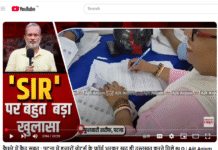Journalists have never been so vulnerable. At least 21 journalists have been killed as of 20 October 2023 in the ongoing Israel-Hamas war – 17 of them Palestinians, three Israelis, and one Lebanese, according to a report by the US-based non-profit Committee to Protect Journalists (CPJ). Eight journalists were reported injured and three are reported missing or detained, CPJ said. The numbers were going up even as this article was being written.
It is not clear if they were all on duty at the time of their deaths but needless to say, it is a tough time for journalists in the war zone, who are racing against deadlines while trying to dodge death.
Reuters video journalist Issam Abdallah was killed and six other journalists were injured in southern Lebanon after they were hit by missiles fired from Israel, reports said, prompting Reuters editor-in-chief Alessandra Galloni to demand an investigation. In another incident, BBC Arabic journalists were allegedly “held at gunpoint by Israeli police in Tel Aviv” as they covered the conflict.
Most of the Palestinian journalists are camped in Gaza City, the center of the conflict, which has been subjected to carpet bombing by Israel in retaliation to Hamas militants going on a killing spree on 7 October – working out of cafes and wherever they can in life-threatening situations and with little resources at hand.
On 10 October, Saeed al-Taweel, Mohammed Subh, and Hisham Alnwajha were filming in Gaza City when an air attack struck a building close to them. All three died.
Journalists killed in the line of duty in strife-torn regions is not new. 20 journalists have died by Israeli military fire in the past 22 years and no one has been held accountable, CPJ said. A year ago, the death of Al Jazeera journalist Shireen Abu Akleh in the occupied West Bank led to outrage. She was wearing a press vest and standing with other journalists, covering Israeli and military operations, when shot in the head.
Commenting on the arguably unprecedented deaths of journalists, Sherif Mansour, CPJ’s Middle East and North Africa program coordinator, said, “CPJ emphasizes that journalists are civilians doing important work during times of crisis and must not be targeted by warring parties … Journalists across the region are making great sacrifices to cover this heartbreaking conflict. All parties must take steps to ensure their safety.”
According to Anne Bocandé, editorial director of Reporters Without Borders, Palestine is now one of the world’s most dangerous countries for journalists. Bocandé went on to denounce the deaths and called on all parties to ensure that journalists are protected per UN Security Council Resolution 2222.
Closer home, journalists are also in the firing line – for numerous reasons
NewsClick editor Prabir Purkayastha and HR head Amit Chakravarty were arrested on October 3 under the Unlawful Activities (Prevention) Act and nearly 70 journalists associated with the news portal were raided and questioned. The arrests come in the backdrop of a report in The New York Times, which alleged NewsClick is funded by a network tied to US millionaire Neville Roy Singham for pushing Chinese propaganda. Singham has denied the propaganda allegations. Journalist associations have spoken out strongly, terming the raids as an attempt to muzzle the media.
A few months ago, in Manipur, four prominent journalists faced criminal charges over a report on the violent clashes between Kukis and Meiteis earlier this year. Journalists being targeted in Manipur and other parts of the Northeast – either by militant organizations or by other actors – isn’t new. In Assam, one of the most sensational murders was that of Parag Kumar Das, the executive editor of Assamese daily Asomiya Pratidin, who was shot dead, allegedly by members of the banned ULFA who had earlier surrendered to police and released in an amnesty scheme.
It would be unfair not to mention Kashmir, where journalists have continuously faced the heat over their coverage of the unrest. And who can forget Gauri Lankesh, who was murdered outside her home in Bengaluru, and Siddique Kappan, who was jailed for 846 days for covering a rape case in Uttar Pradesh? According to the Rights and Risks Analysis Group (RRAG), a total of 194 journalists, including seven women journalists, were targeted across India in 2022 – either by state or non-state actors.
In most of these cases, and most obviously in Palestine, the journalists were only doing their duty. A CPJ report said 2022 was a ‘deadly’ year for the media with at least 67 journalists and media workers killed. More than half were in war-torn Ukraine (15), Mexico (13) and Haiti (7). The way the Israel-Palestine war is heading, one can only fear 2023 does not exceed that number.
















